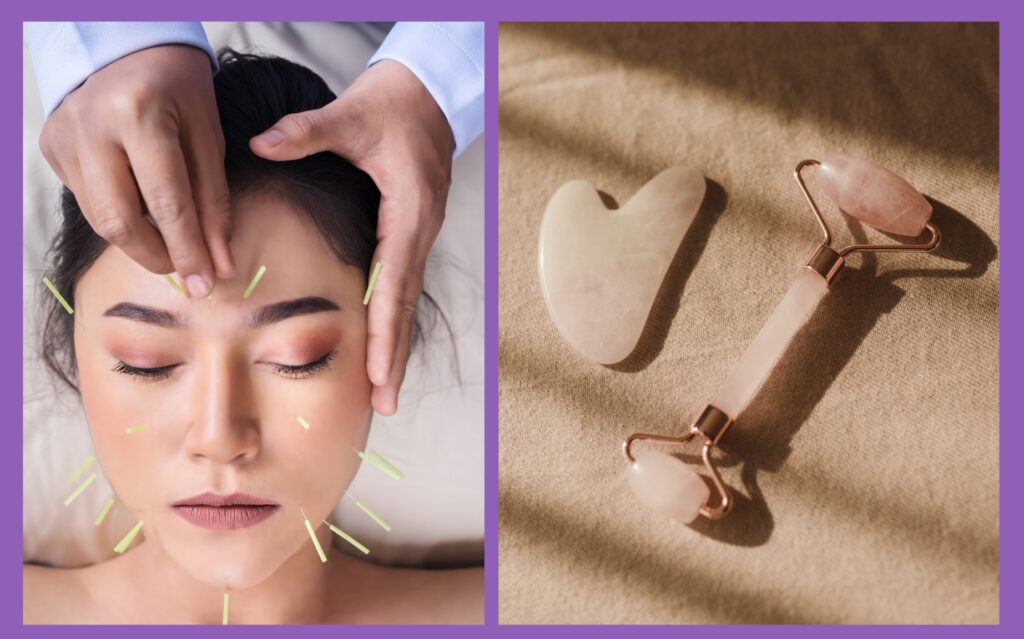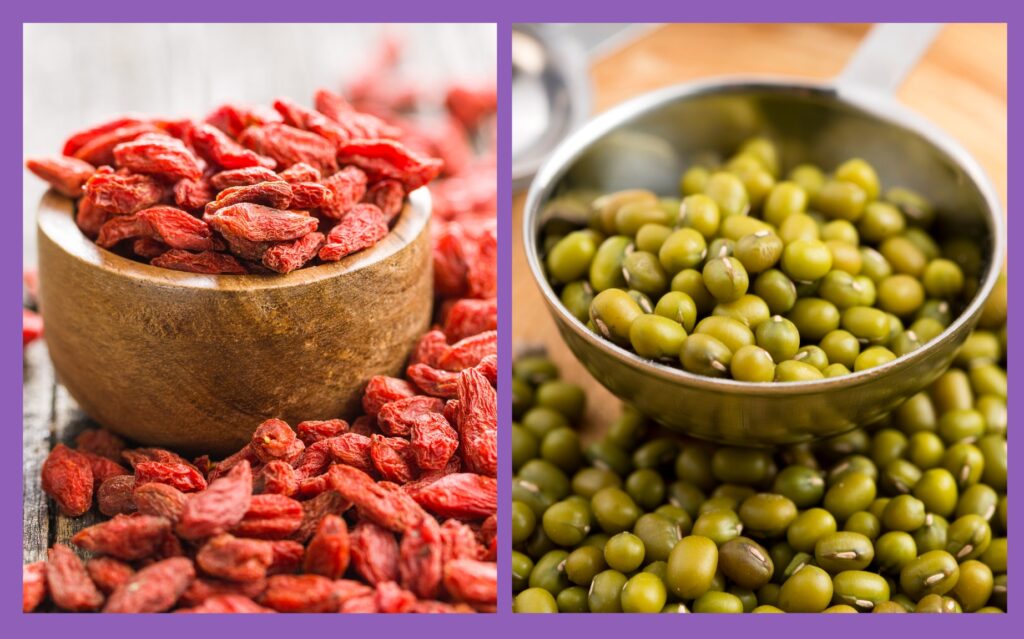It’s no secret that East Asia has been seriously ahead of the skincare game for centuries. We’ve all bought a jade roller at some point and then watched a TikTok video about how to use it correctly to reduce our morning puffiness. Celebrity skin and wellness expert, Ada Ooi – a certified holistic acupuncturist at her own Harley Street clinic – explains the traditional Chinese medicine (TCM) approach to skincare and the simple tweaks to our lifestyle we can make to improve skin health.
The idea of qi
Traditional Chinese medicine takes a holistic approach to health. Qi (pronounced “chi”) means a good flow of one’s vital energy and blood throughout the body while maintaining a balance of yin (cooling) and yang (heating) elements.
“The triangle for an authentically holistic treatment is a combination of TCM, aromatherapy and aesthetic therapy,” says Ada. “It’s all about blood health when it comes to TCM. The better the blood flow, the better the body’s metabolism and immunity which contributes to the skin.”
“During a consultation with a traditional Chinese herbalism practitioner, he or she will look for patterns to determine what’s causing the skin response,” Ada says. “It may be triggered by warm weather, spicy foods, stress, food intolerances, or exposure to environmental toxins. The cause needs to be addressed before balance can be restored.”
So, how do you detect whether your qi is off? Look in the mirror. If your skin looks reddish, feels sensitive and you have clammy hands and feet, you may have excessive heat in the body that needs dispersing. TCM believes it’s down to what’s going on inside your body, and you need to get your qi up and moving again. “We have a saying in Chinese medicine, ‘it’s always better to see a sign than not at all’. When signs show up on your skin, you can deal with it.”

Try out acupuncture
You may have seen a couple of gory images of needles on your body outside a TCM practice. Though the thought of fine needles penetrating the skin may sound a tad distressing, this ancient practice, along with other pressure techniques, is the go-to solution for skin conditions like psoriasis.
“Acupuncture is a very targeted method to stimulate or to disperse where it is stagnant and toning where it is deficient to create alignment in your body,” says Ada. “When combined with other skin-touch modalities like acupressure, it detoxifies the skin and alleviates symptoms of eczema and psoriasis.”
Acupressure tools (like the gua sha and jade rollers)
The jade rollers and gua sha have become synonymous with beautifully sculpted skin. Originating from China, these rollers are more geared towards “the well-being side of Chinese medicine,” according to Ada.
“It’s incomparable,” says Ada when discussing the jade roller versus the gua sha. “Gua sha, or the motion of scraping with the acupressure tool, stimulates new cell and collagen production and helps with facial sculpting.”
If your goal with using a roller is to decrease puffiness, Ada recommends massaging your face instead, saying a roller “does nothing” for her. But “any massage is better than no massage,” she adds. “If you have a jade roller, use it when you’re doing a sheet mask, don’t just throw it away now.”
Cupping
Cupping, an esteemed Chinese medicine technique, employs suction cups strategically placed on the skin. “Mostly for the body, cupping is a good modality that boosts blood flow to muscles and fascia for tension release and triggering reflexive responses along the Chinese Meridian network,” says Ada.
Essentially, cupping enhances blood circulation at the targeted site, alleviating muscle tension and improving overall blood flow for cellular repair. “We could use cupping to target lines on the face as a supplement to other modalities like acupuncture, gua sha and technology like micro-current and medical-grade LED.”
Although cupping is associated with temporary red marks caused by intense suction that stimulates blood circulation, it doesn’t have to leave such marks. Some clinic therapists skilfully combine lymphatic drainage and the Chinese Meridian network, offering no-mark cupping options for clients.

Try mung beans
Although mung beans are most popular in Chinese cakes and desserts, there is more to them than meets the eye. Mung beans are also a staple in traditional Chinese medicine as they are rich in antioxidants and usually used to soothe acne, cold sores and rashes. Brewing a hearty mung bean soup is always a good idea as they have cooling and healing properties which boost blood circulation, reduce inflammation on the skin and help with de-puffing.
Red dates and goji berries
Red dates and goji berries are a staple in Chinese soups and traditional Chinese remedies. Not only do they sweeten the flavour of soup, but they also act as great antioxidants and protective barrier to your skin, keeping your collagen and elastin fibres in shape.
If you’re looking for alternative remedies to increase your skin health and want a more holistic approach to well-being, the traditional Chinese medicine approach could be the one for you. “It’s not just about finding a cure, but incorporating changes to your diet and personal care routines that will help you achieve healthy skin from inside out – and the outside in,” says Ada.

